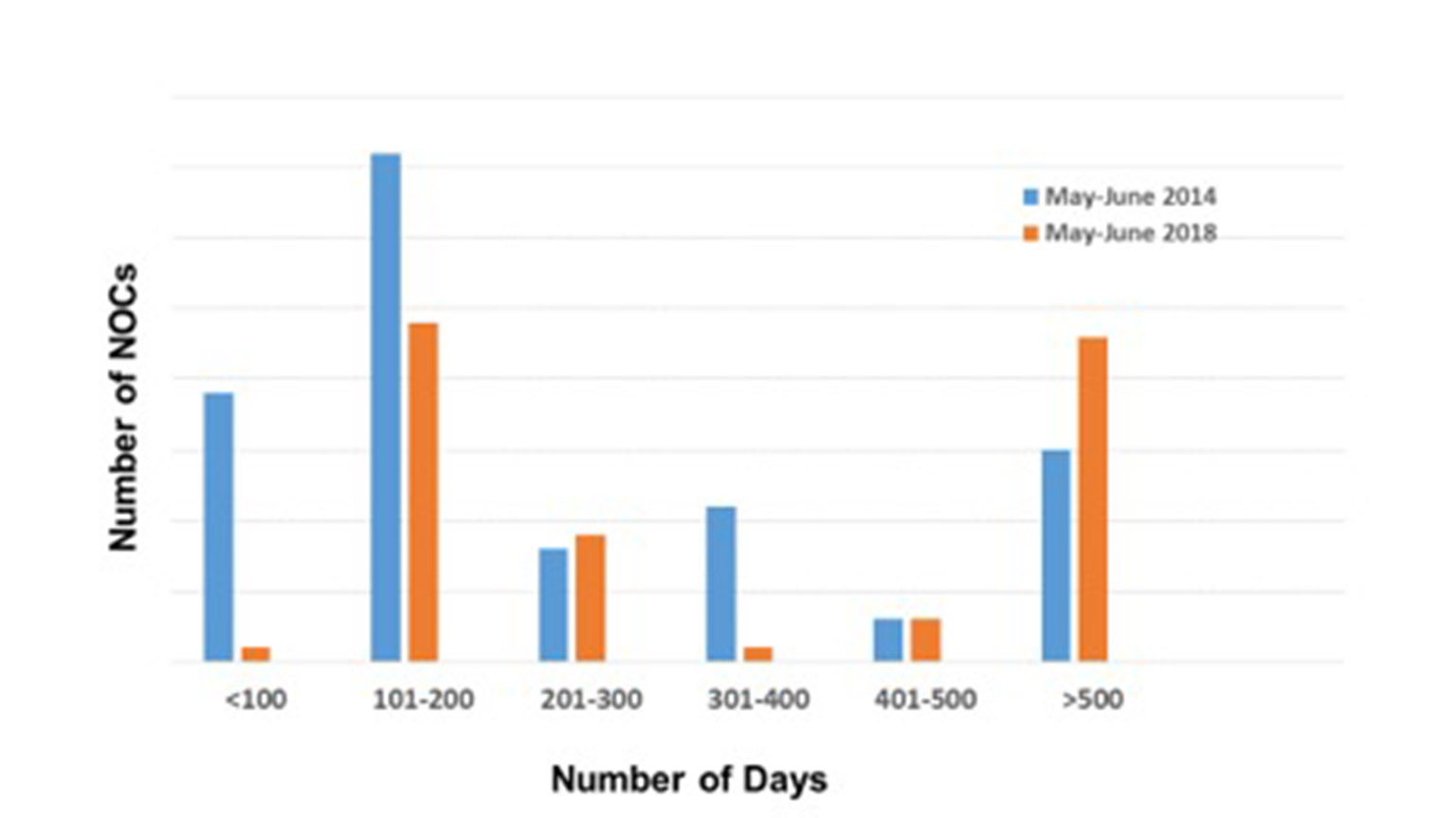Is the TSCA Impeding Innovation in New Chemicals?
Download as PDF
Keith B. Belton
The United States’ chemical manufacturing sector is globally competitive and thriving. The industry produces 12 percent of global chemical production, second only to China; consistently runs a trade surplus (excluding pharmaceuticals); and the average compensation per worker is much higher than the average for all of U.S. manufacturing. Among the nearly 20 subsectors of domestic manufacturing for which the U.S. government collects data, chemicals provide the highest value-added to the economy.
A major reason for its competitiveness is innovation—the development of new products or new processes that achieve market success. The U.S. chemical industry spends $12 billion annually on research and development and has a high level of patent intensity (patents per employee). New chemical products consistently produce between 10 percent and 20 percent of total revenue for U.S. chemical manufacturers, according to one longitudinal survey.
Despite its status as an engine of innovation, some in the chemical industry are questioning whether a 2016 law is having a negative impact on the industry’s productivity. Have federal regulators erected unnecessary barriers to market entry for new chemical substances?
TSCA 2.0
Under the Toxic Substances Control Act of 1976 (TSCA), the US Environmental Protection Agency (EPA) is responsible for ensuring that chemicals in commerce—of which there are tens of thousands—do not pose an “unreasonable risk to health or the environment.” In doing so, the EPA must take care not to “impede or create unnecessary economic barriers to technological innovation.”
When writing TSCA more than 40 years ago, Congress chose to establish different regulatory programs for existing chemicals already in commerce and new chemical substances. The 62,000 substances on the original chemical inventory were not required to go through EPA review. New chemicals, however, would be subject to a 90-day EPA review before they could be bought or sold, during which the Agency could impose requirements or seek additional information from the manufacturer.
In 2016, Congress significantly amended TSCA with the Frank R. Lautenberg Chemical Safety for the 21st Century Act. This was the first major environmental statute to be enacted in twenty years. It provided the EPA with significant new authority, and it enjoyed overwhelming bipartisan support. The impetus of the new law (“Lautenberg”) was an acknowledgment that the existing chemicals program was not working. Tens of thousands of chemicals were allowed to continue in the market without any required review of their safety, and questions arose as to whether the Agency had sufficient authority to effectively regulate them. Under Lautenberg, Congress gave the EPA a mandate and timetable to prioritize, evaluate, and, if appropriate, regulate a minimum number of existing chemicals every year. Congress also gave the Agency more tools to compel testing and impose risk management measures.
Congress made several key changes to the new chemicals program. Specifically, the revised law:
- Requires the Agency make one of five determinations on every new chemical based on its “reasonably foreseeable” conditions of use. The substance either (1) presents an unreasonable risk, (2) is not likely to present an unreasonable risk, (3) may present an unreasonable risk, (4) is produced in substantial quantities, or (5) insufficient information exists to make a risk determination;
- Prohibits the Agency from considering cost or other non-risk factors during its review; and
- Allows the EPA to revise the fee that manufacturers are charged when they submit a new chemical application (known as a premanufacture notice, or PMN) for Agency review. The EPA has since raised the fee from $2,500 to $16,000 for the largest companies and from $200 to $2,800 for small- and medium-sized companies. The new fees went into effect October 1, 2018.
These statutory changes, which were supported by the US chemical industry, are now at the center of the debate over whether the new law is hurting innovation.
TSCA Implementation by the Numbers
The EPA has been implementing the revised law since June 22, 2016. Table 1 shows publicly available statistics for the new chemicals program from October 1, 2012 (the beginning of fiscal year 2013, FY13), to September 30, 2018 (the end of fiscal year 2018, FY18).
Table 1. Statistics on New Chemicals Subject to TSCA, FY13-FY18.



